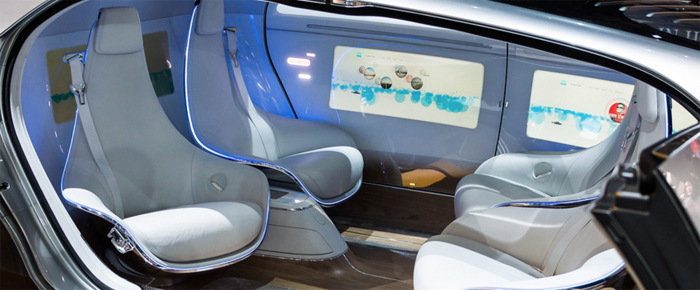
By Haddon Libby
Back in 1939 at the New York World’s Fair, there was an exhibit called Futurama. This exhibit showed a future where cars were controlled remotely.
Hollywood further imagined autonomous cars with the Herbie the Love Bug, the Batmobile, KITT from Knight Rider, Benny the Cab from Who Framed Roger Rabbit and many others.
No longer relegated to the imagination of science fiction writers like Robert Heinlein or Isaac Asimov, the driverless car is here.
Instead of using radio waves as envisioned 76 years ago, these cars which are often called pods will operate using a network of satellites and computers.
While Google led the charge on this future technology, many have jumped on the bandwagon an may be surpassing them. China’s Changan and partnerships between Baidu/BMW and Geely/Volvo are leading the way in China.
Experts believe that China will be an early adopter of the driverless car technology. Given the congestion of their population centers, driverless cars can pack more cars into a small area while consuming 30% less fuel. Most importantly, litigation risk will be lower in China given the central control government system that this country operates under. Lastly, many in China have never driven cars and as such can be expected to embrace this technology more quickly than more experienced drivers in developed countries like the United States.
While no one can be certain on the exact date when driverless cars will take to roadways, 2020 is the target date for the commercial launch of driverless cars by Audi, BMW. Changan, Daimler, Ford, General Motors, Google, Kia, Mercedes-Benz, Nissan, Renault, Tesla, Toyota and Volvo.
For driverless cars to take the road, every road needs to be mapped in detail. The tech company Mobileye expects that much of this work to be done next year for country roads with city roads completed by 2018.
In 2018, Baidu expects to release an operating system to run a fully autonomous car.
By 2020, Google hopes to have all issues related to having a car on the roads of the United States. As part of this, Google joined with Ford, Uber and others to recently launch the Self Driving Car Coalition. Their objective is to set a common standard for driverless cars on American roadways.
General Motors projects that all of their new cars will have driverless technology within ten years.
Auto industry expert IHS believes that most cars on the road will be driverless within twenty years. The Institute of Electrical and Electronic Engineers believes more than 75% of all cars on the roadways with be driverless within twenty-five years.
As a result of this change in how we commute, Pricewaterhouse Coopers projects that accidents will decline by 90%.
Morgan Stanley estimates that driverless cars will save the United States $1.3 trillion annually due to increased productivity ($645 billion), fewer crashes ($488 billion) and lower fuel costs ($169 billion).
Last year, there were more than 6 million car accidents in the United States, injuring 2.3 million people and killing 32,675. Approximately 94% of all fatalities were at least partially caused by human errors. Worldwide there were 50 million accidents and more than 1 million killed.
While many may reject the concept of giving up the independence of driving their own vehicle, just think of the benefits to you, your family and society as a whole.
In the future, one can work, sleep or relax while being transported. Distracted driving will go away. No more DUIs.
Driverless cars will mean increased mobility for older and disabled people. Studies show that at the age of 75, many people begin to suffer health problems that limit or preclude driving.
Between driverless cars and the use of renewable energy sources to power those cars, a future where pollution declines quickly and the quality of life increases exponentially is close at hand.
Haddon Libby is a Senior Managing Director and Investment Manager for Winslow Drake. He can be reached at 213.596.8399 or hlibby@WinslowDrake.com










































